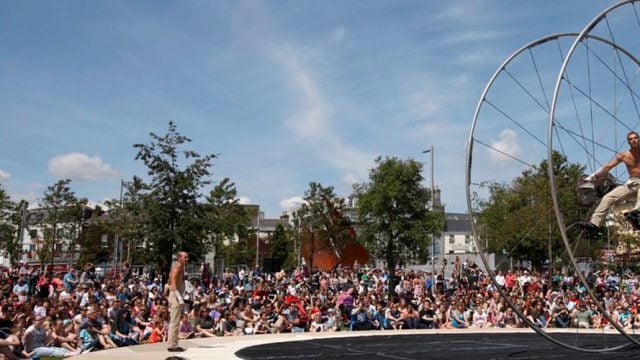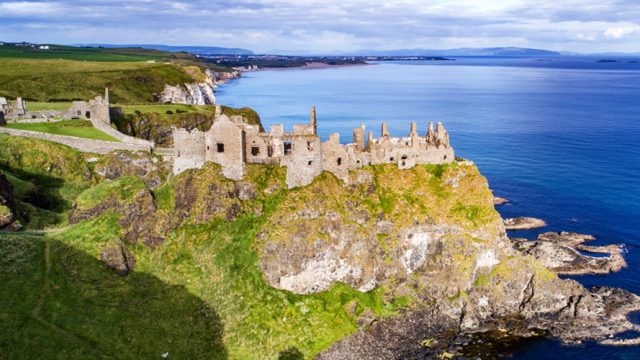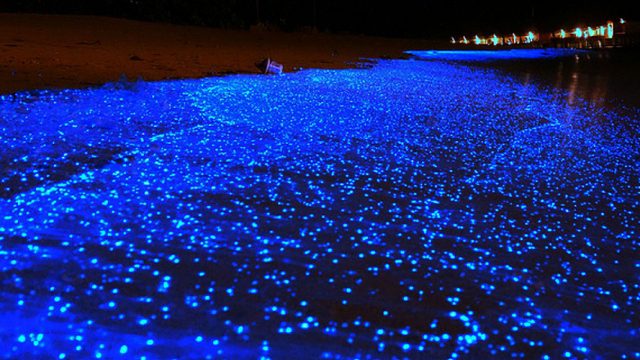And now a famous song you folks must have heard about the place,” crackled the sonorous voice

One of the most scenic circular routes in the world, the 170-km-long Ring of Kerry tour is as much a showcase of Irish humour as sparkling lakes, scenic highlands and rugged coastlines. Be it bus drivers, cruise skippers, nature guides like Con Moriarty or jarvies operating jaunting cars (horse-drawn carts), locals pride themselves in their knowledge and like to tell it with swagger, as if each one of them had locked lips with the Blarney stone.
The train journey from Dublin to Killarney via Mallow seemed like some old, forgotten memory. A scenic racecourse, church steeples, old aquaducts and grazing sheep whizzed by, and we reached Killarney by dusk. Our base for the Ring of Kerry adventure, Killarney was Ireland’s tidiest town in 2011, with cobbled paths and neat rows of bars, restaurants and shops selling Irish souvenirs. It was at Foleys Townhouse, originally a 19thcentury coaching inn, that we first heard ‘Dingle Bay’ bandied about as a term to authenticate its fresh catch.
Tourism in Killarney isn’t new. The scenic region got a royal stamp of endorsement after Queen Victoria’s visit in 1861, and in late 19th century, writer Bram Stoker visited Killarney. It’s believed that the vampire chronicles of Dracula were inspired by his late-night wanderings around Ross Castle and stories of hermit John Drake who slept in a coffin in Muckross Abbey. Interestingly, the Gaelic phrase for bad blood is droch fola.
Stories of our midnight mayhem could have filled a book and we barely made it for the early-morning start to the Ring of Kerry tour. Our first stop was Kerry Bog Village Museum at Glenbeigh, winner of the Agri Heritage Award. Recreating a typical 18th-century village during the Great Irish Famine (1845-52), the various period cottages are home to beautifully illustrated traditional architecture. The Turfcutter’s Dwelling had river reed as thatch, bog scraw for insulating the ceiling and uneven flag stone floors. The stone-built Old Forge was dimly lit for the blacksmith to discern the temperature and colour of the horseshoes on the cobbled floor. The Stable Dwelling came with a hen house, butter churns and a raised back door for sweeping away animal droppings. The Thatcher’s Dwelling had spacious interiors and a first floor, but the most fascinating structure was the humble Labourer’s Cottage with its mud floors and small windows.
In the old days, under Irish taxation laws, people paid more for large windows, as more natural light in the house was seen as a luxury. Houses, therefore, had unusually small windows and half doors (the light from the top half of the door wasn’t taxable). It was this intriguing practice that gave rise to the phrase ‘daylight robbery’. The museum also showcased a Romany Caravan used by the travelling people of Ireland and rare, native animal breeds like the Kerry Bog pony and the world’s tallest dog—the Irish wolfhound. Used to hunt wolves, elk and boar since Roman times, Irish wolfhounds had been procured by Roman consul Quintus Aurelius in 391 CE to fight in the Roman Colosseum!

Adjacent to the museum, The Red Fox Inn run by the warm Mulvihill family was the perfect place for a ‘3P stop’ (pee, photo, puff), as our tour guide Virginia Moriarty quipped. If you thought a caffeine shot was rejuvenating, wait till you spike it with some Irish whiskey and cream. After alarmingly large portions of Irish coffee, we were back on the road to Cahersiveen, driving past vestiges of the old railroad and ruins of stone cottages from the great famine. In the distance, the jagged pinnacles of Skellig Islands jutted out of the Atlantic Ocean like croutons in a bowl of soup. Little Skellig hosts about 66,000 gannets, the world’s second-largest colony of these seabirds while the Unesco world heritage site of Skellig Michael holds medieval monastic ruins.

The Ring of Kerry provided an amazing insight into Ireland’s ancient history. From wedge tombs of the Neolithic period, stone circles of the Bronze Age, beehive huts and Ogham stone inscriptions of the Iron Age, the 4,000-year-old copper mines of Ross Island to churches, castles and abbeys, it had it all. A cluster of islets were nicknamed ‘The Bull, the Cow and the Calf’ and Henry pointed out a bizarre house built like a boat at the water’s edge, described by locals as ‘the ship that never went to sea waiting for the high tide’. Beyond Beenarourke Pass at Coomakista, we halted at the Lady Madonna Statue for Sailors Lost at Sea. All along, we spotted quaint seafood restaurants like Smugglers Inn and Sheilin, but dropped anchor at Scariff Inn, which offered the “most scenic view in Ireland.” We dined on lamb stew, seafood chowder and other traditional Irish fare with views overlooking the bay.
Before long, we rolled into the seaside resort town of Waterville, a favourite holiday spot for Charlie Chaplin and his family. Chaplin first visited Waterville in 1959 and liked it so much that he returned every year for a decade. Not far from Butler Arms Hotel, where he stayed, a statue commemorates his visits with a plaque “For a man who made the movies speak in the heart of millions.
Charlie spent many a year in our midst as a welcome and humble guest and friend to many.” His image was created by sculptor Alan Ryan Hall and funded by Chaplin’s daughter Josephine. As a tribute, Waterville hosts the annual Charlie Chaplin Comedy Film Festival in August. Following Chaplin’s footsteps, the town attracted other celebrities like Shirley MacLaine, Catherine Zeta-Jones and Tiger Woods.
Scenic coastal hikes from Waterville to Cahersiveen and Caherdaniel form a part of the wonderful 200-km-long walking trail The Kerry Way. Henry explained to us the origin of Irish town names. Places like Kildare and Kilkenny denote church (Kil means ‘Church of’), Ballyn is ‘Town of’ while Caher means ‘Fort of’, usually a stone fort located inland. Dun refers to a fort by the sea while List refers to a fort built between 400 BCE and 100 CE.
Henry also regaled us with other curious factoids. “You can tell the weather by the position of sheep on the mountain side,” he postulated. Before the guffaws could die down, he patiently elaborated, “If they are grazing at the top, it means the weather will be good because they’ll need time to come down. So if they are at the foot of the mountain, it means the weather might be dodgy.”

We realised why sheep are synonymous with the Irish countryside as we cruised towards picturesque Sneem, which formed a swirling knot in the Ring, where the river Sneem joined Kenmare Bay. A statue of Steve ‘Crusher’ Casey, five times World Heavyweight Champion in wrestling between 1938 and 1947, adorned the town square. A short walk led to the scenic bridge and a quaint bar fronted by boulder with a short eulogy: “Those days in our hearts we will cherish, Contented although we were poor, And the songs that were sung, In the days we were young, On the stone outside Dan Murphy’s Door.”
We repeatedly tested the advertising tagline ‘Guinness is good for you’ before continuing on the Ring, which contoured the ever-changing landscape. We passed Moll’s Gap, Gap of Dunloe, Macgillicuddy Reeks, Ireland’s highest peak, the majestic Corran Tuathail (3,414 ft), Lough Leane, the biggest of the three lakes of Killarney, and Ladies View, named after a lady-in-waiting of the Queen who gushed: “This is the finest view in all the realm.”
The drive back to Killarney through forests of oak and yew was a breeze. The 26,000-acre Killarney National Park was criss-crossed by several walking paths like Old Boathouse Trail and Arthur Young Trail. But all we could walk was a few paces to Hannigan’s Bar for a pint and an evening of live Irish music. It all seemed oddly familiar, like a face you’ve seen before. Maudlin, we joined in the chorus to ‘Molly Malone’, ‘Danny Boy’, ‘My Bonnie’ and ‘It’s a Long Way to Tipperary’ and realised that the songs we grew up with were actually classic Irish ballads! The guy at the bar summed it up well: “God bless the wives of Ireland, All their men are half mad, All their wars are merry, And all their songs are sad!”
The information
Getting there: Lufthansa, Emirates, Etihad, Jet,Turkish Airlines and KLM operate hopping flights to Dublin from New Delhi for approximately Rs 43,000 one-way. From Dublin take an Aer Lingus connection to Kerry Airport (55 min). Alternatively, take a train from Dublin’sHeuston station to Mallow (2hr 15min, leaves every hour) for the onward journey (5-8pm) and every half hour for the return (5:30-7:30pm). At Mallow, take a change to Killarney (1 hr). There’s a 5:05pm direct train from Heuston to Killarney (€75 return) as well.
The tour: The 179km circular loop road(N70, N71 and R562) starts from Killarney in County Kerry, south western Ireland, heading around the Iveragh Peninsula through Kenmare, Sneem, Waterville,Cahersiveen and Killorglin. As the narrow roads make it difficult for tour coaches to pass, buses run in an anti-clockwise direction, travelling via Killorglin. This trip is usually done in a day. We travelled with Rail tours Ireland (€109 for adults, €98 for students; www.railtoursireland.com, www.irishrail.ie), which organises daily rail and coach tours (except Sundays) from Dublin’s Heuston station to Killarney via Mallow. Choose from other great tours to the Aran Islands, Cliffs of Moher, Cork, Connemara, Galway Bay, Blarney Castle, or the Giant’s Causeway.
Where to stay: At Killarney, you could stay at the Killarney International (from €85doubles , +353-0-64-6631816, www.killarneyinternational.com) or at Foleys Townhouse Guesthouse (from €120 doubles; +353-0-64-6631217, www.foleystownhouse.com).
What to see & do: The tour offers much by way of sights. Peat bogs, prehistoric ruins, the Killarney National Park, the Kerry Bog Village Museum, the Skellig Islands, Muckross House and day trip to Gap of Dunloe are the big highlights. Don’t forget to savour the Irish coffee at Red Fox Inn, seafood chowder at Scariff Inn and an Irish meal at Foleys Townhouse. And of course, you must try a pint of Guinness at a local bar.
Other tours: Killarney Lake Tours (www.Killarneylaketours.ie) organises various sighteseeing tours. Their mainstay are the MV Pride of the Lakes Waterbus and Lily of Killarney Watercoach. You can enjoy daily tours from Ross Castle (10:30am-5pm) to Ring of Kerry and the Dingle Peninsula. Their Gap of Dunloe Tour combines travel by bus, pony carriages and boat via the Lakes of Killarney.
The Kerry Way is an established 200km walking path that roughly follows the scenic driving route, while a sign-posted Ringof Kerry cycling path uses older, quieter roads. There are numerous variations to the route like St. Finian’s Bay and Valentia Island, which the official driving ring skips. To plan your Ireland tour, visit www.discoverireland.com.
Ring of Kerry
tourist route
Leave a Reply
You must be logged in to post a comment.





